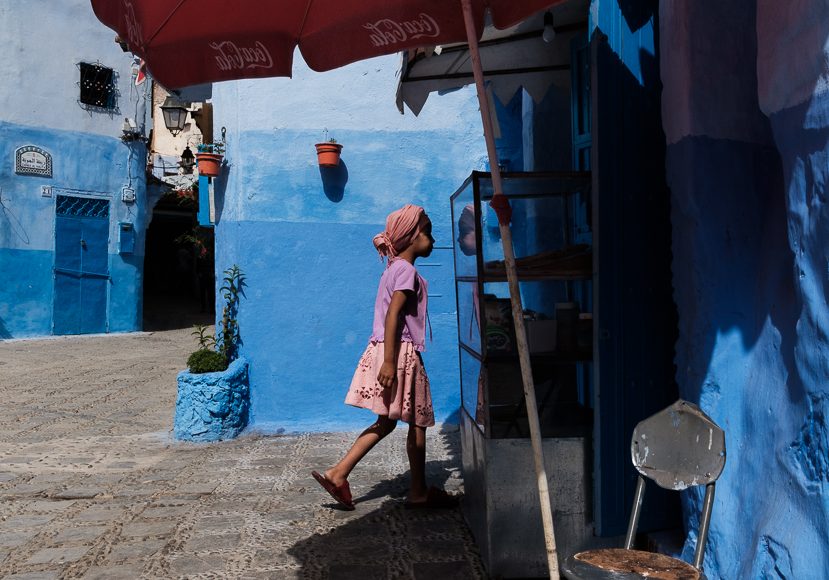
Storytelling in Street Photography: Creating Meaningful Images
Master the art of storytelling in street photography to create captivating, meaningful images, with these tips.
Learn | Street Photography | By Polly Rusyn
Ever wonder what separates a good street photo from a truly great one?
One word: storytelling.
That’s right – the secret sauce to creating meaningful images that make people stop and stare is all about telling a compelling story through your lens.
Street photography isn’t just about snapping a cool pic; it’s about capturing the raw essence of life, the human experience, and the world around us.
In this article, we’ll dive into the importance of storytelling in street photography and explore how you can elevate your images by weaving together captivating narratives.
Let’s embark on this photography storytelling journey together!
1. The Power of Storytelling in Street Photography
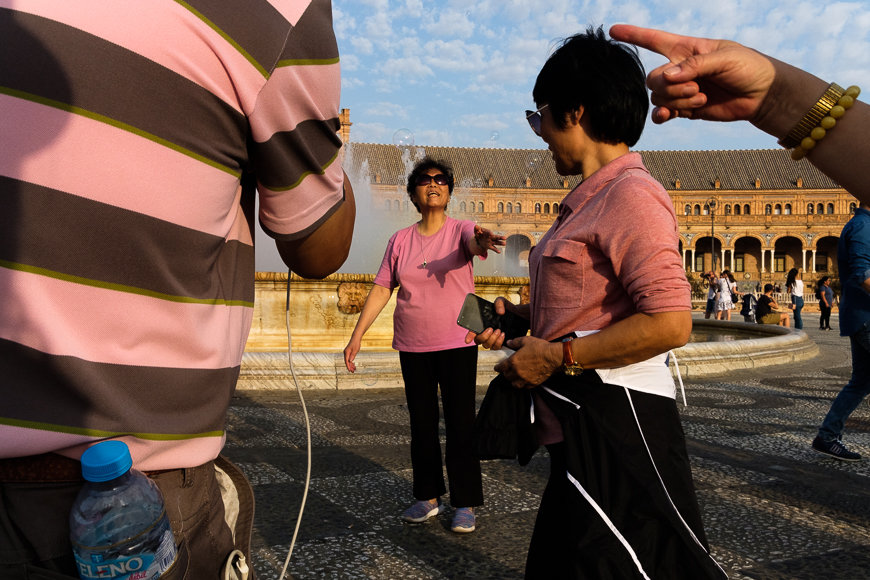
© Polly Rusyn
Connecting with the viewer
So, what’s the big deal about storytelling in street photography, you ask?
Well, for starters, it’s all about connecting with the viewer.
When you tell a story through your images, you’re inviting people into the world you’ve captured, allowing them to experience the emotions, atmosphere, and characters in your frame.
It’s like giving them a front-row seat to the theater of life, and who wouldn’t want that?
Eliciting emotion and empathy
But it doesn’t stop there – great storytelling goes beyond just connecting with the viewer.
It’s also about eliciting emotion and empathy.
When you tell a story that resonates with people, you’re tapping into their emotions and creating a shared experience.
Suddenly, your image becomes more than just a pretty picture – it’s a conduit for human connection and understanding.
Communicating a message or theme
Lastly, storytelling allows you to communicate a message or theme through your photography.
This could be anything from a social commentary to a simple observation about the human condition.
By weaving a narrative into your images, you’re not only capturing a moment in time but also sharing your unique perspective on the world.
And that, my friends, is what makes street photography so darn powerful!
In a nutshell, storytelling in street photography is all about connecting with the viewer, eliciting emotion, and communicating a message or theme.
When you master the art of storytelling, you’ll be able to create images that are not only visually stunning but also deeply meaningful and impactful.
How Much Do You REALLY Know About Photography?! 🤔
Test your photography knowledge with this quick quiz!
See how much you really know about photography...

So, are you ready to unlock the power of storytelling in your street photography?
Let’s dive in!
2. Building a Narrative in Your Images
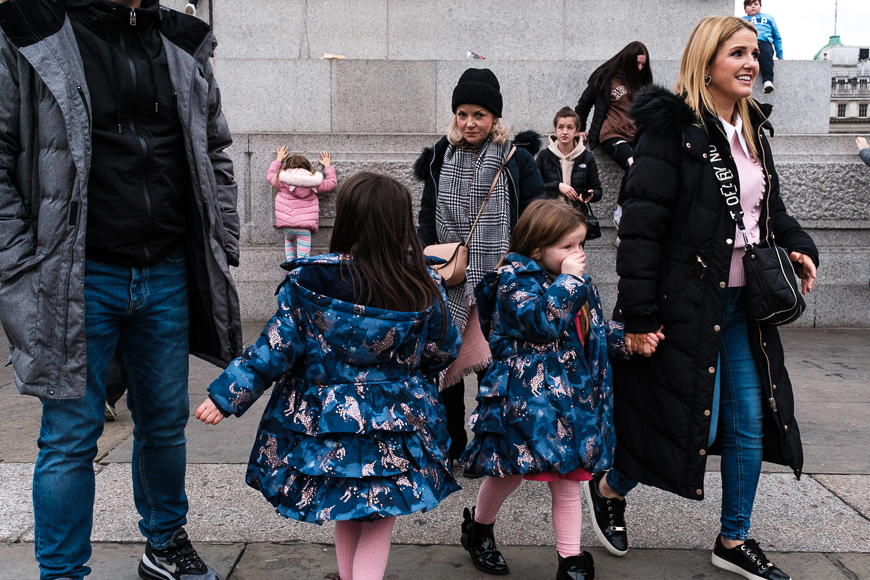
© Polly Rusyn
Capturing decisive moments
To weave a narrative into your street photography, you’ve gotta start by capturing those decisive moments – you know, the ones that make your heart skip a beat and your finger instinctively press the shutter.
These moments can be anything from a fleeting expression to a perfectly timed interaction.
The key is to be patient, observant, and ready to pounce when the moment presents itself.
Utilizing visual elements to guide the viewer
Next up, let’s talk about using visual elements to guide your viewer through the story.
Things like leading lines, contrasting colors, and interesting shapes can all help direct the viewer’s eye and create a sense of flow in your image.
By thoughtfully composing your shots, you’ll be able to craft a visual narrative that keeps your audience engaged and intrigued.
Creating a sense of place and context
Lastly, it’s essential to create a sense of place and context in your street photography.
After all, a story isn’t complete without a setting, right?
To do this, try incorporating elements that convey the atmosphere, culture, or environment of the location you’re shooting in.
This could be anything from a local landmark to a street sign or even a splash of regional color.
By grounding your images in a specific place and time, you’ll give your story a solid foundation and make it even more compelling.
In short, building a narrative in your street photography involves capturing decisive moments, utilizing visual elements to guide the viewer, and creating a sense of place and context.
By honing these skills, you’ll be well on your way to crafting captivating stories that resonate with your audience.
3. The Role of Composition in Storytelling
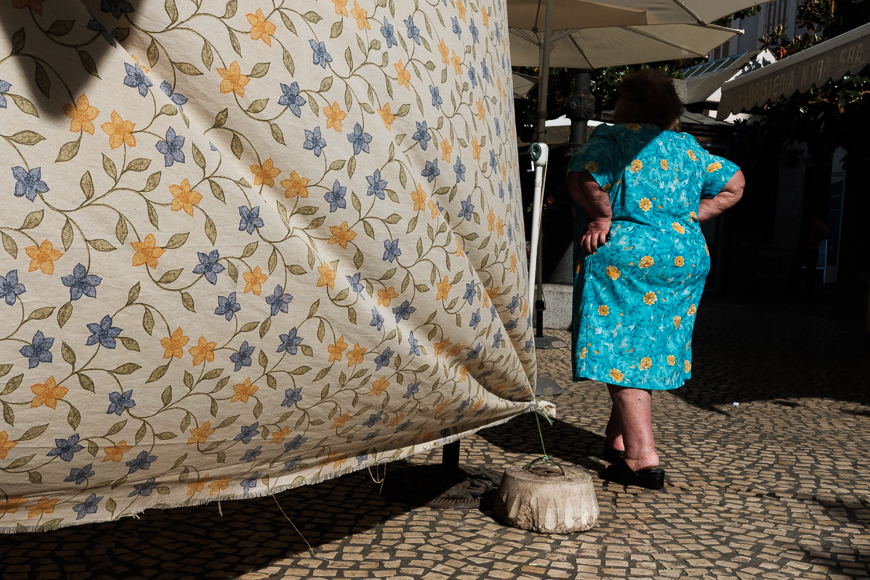
© Polly Rusyn
Framing your subject
Alright, let’s chat about the role composition plays in storytelling.
First up, framing your subject.
By thoughtfully framing your subject, you can draw attention to the most important parts of your story and create a sense of focus.
This could mean using natural frames like doorways or windows or even playing with negative space to create a striking visual contrast.
Remember, the way you frame your subject can make or break your story, so choose wisely!
Using leading lines and the rule of thirds
Next on the composition menu: leading lines and the rule of thirds.
These tried-and-tested techniques can help you create a sense of balance, movement, and depth in your images, all of which contribute to a more dynamic and engaging story.
So, whether you’re using a sidewalk to lead your viewer’s eye or placing your subject on a power point according to the rule of thirds, be mindful of how these compositional tools can enhance your storytelling.
The impact of color and light
Last but certainly not least, let’s talk about the impact of color and light on your storytelling.
By harnessing the power of color and light, you can create mood, atmosphere, and even a sense of time in your images.
Think about how warm, golden light can evoke a feeling of nostalgia, or how bold, contrasting colors can add drama to your scene.
Mastering the art of using color and light in your compositions will take your storytelling to new heights.
To sum up, composition plays a crucial role in storytelling by helping you frame your subject, create balance and movement, and convey mood and atmosphere through color and light.
By paying close attention to these elements, you’ll be able to craft images that tell a powerful and compelling story.
4. Telling Stories Through a Series of Images
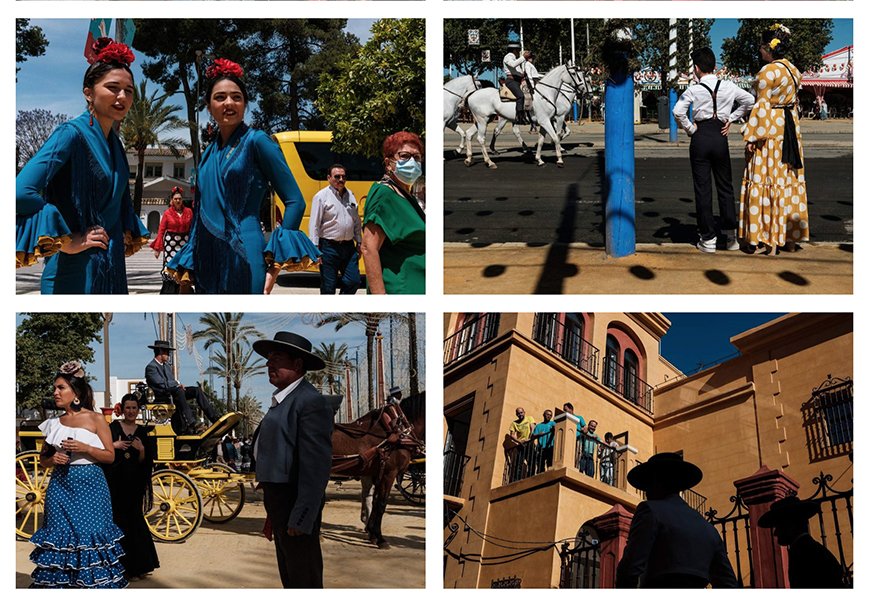
© Polly Rusyn
The power of photo essays
Now, we’ve talked a lot about telling stories through individual images, but what about weaving a narrative through a series of photos?
Enter the magical world of photo essays!
By combining multiple images that relate to a central theme or story, you can create a more comprehensive and immersive narrative that delves deeper into the lives, emotions, and experiences of your subjects.
Selecting images that complement each other
When putting together a photo essay or series, it’s important to select images that complement each other and contribute to the overall narrative.
This could mean choosing photos with similar color schemes, compositional elements, or subject matter.
The goal is to create a visual flow that guides your viewer through the story and keeps them engaged from start to finish.
Creating a sense of progression and development
Lastly, think about how you can create a sense of progression and development within your series.
This might involve arranging your images in a particular order, using visual elements to create a sense of continuity, or even incorporating text or captions to provide context and narrative structure.
By giving your series a sense of progression, you’ll be able to take your viewer on a journey and create a more immersive and satisfying storytelling experience.
So, there you have it!
Telling stories through a series of images involves harnessing the power of photo essays, selecting complementary images, and creating a sense of progression and development.
By mastering these techniques, you’ll be able to create captivating narratives that transport your viewers into the world you’ve captured.
5. Learning from the Masters of Street Photography Storytelling
Alex Webb: Exploring the emotional landscape
Let’s kick off our masterclass with the legendary Alex Webb, known for his vibrant, layered, and emotionally charged images.
Webb’s keen eye for color and his ability to capture complex, multi-dimensional scenes have made him a storytelling icon in the street photography world.
Studying his work can help you develop a more nuanced understanding of how to evoke emotions and tell rich, in-depth stories through your images.
Susan Meiselas: The art of documentary storytelling
Next up, we’ve got Susan Meiselas, a powerhouse in the world of documentary photography.
Meiselas’ work often deals with social and political issues, and her empathetic approach to storytelling allows her to create deeply moving and thought-provoking narratives.
By examining her work, you can learn how to tackle challenging subjects and use your photography as a means of shedding light on important stories that might otherwise go untold.
Diane Arbus: Capturing the essence of humanity
Last but definitely not least, let’s talk about Diane Arbus, a true trailblazer in the world of street photography.
Arbus had an uncanny ability to connect with her subjects and capture the essence of their humanity, resulting in images that are both intimate and revealing.
Studying her work can teach you how to build a rapport with your subjects and create images that delve beneath the surface to reveal the true heart of your story.
By learning from masters like Alex Webb, Susan Meiselas, and Diane Arbus, you’ll gain invaluable insights into the art of storytelling in street photography, helping you to create images that resonate with viewers and leave a lasting impact.
6. Tips for Developing Your Storytelling Skills in Street Photography
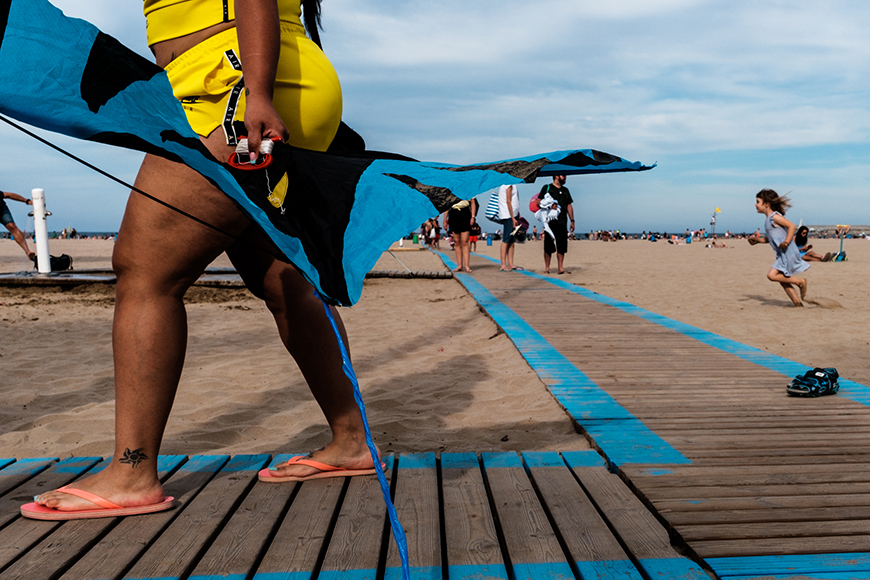
© Polly Rusyn
Be curious and observant
First things first, to be a great storyteller, you need to be curious and observant.
Keep your eyes peeled for interesting moments, interactions, and details that can help you tell a compelling story.
The more you hone your observation skills, the better you’ll become at spotting those special, story-rich moments that make street photography so fascinating.
Be patient and persistent
Let’s face it, capturing a powerful story in a single frame takes time and patience.
So, embrace the process, and be persistent in your pursuit of the perfect shot.
Remember, some of the most captivating stories emerge when you least expect them, so keep your camera ready and be prepared to seize the moment.
Practice empathy and connection
In street photography, it’s important to approach your subjects with empathy and strive to make a genuine connection.
By putting yourself in your subjects’ shoes and considering their perspectives, you can create images that convey a sense of authenticity and emotional depth.
Experiment with different styles and techniques
Finally, don’t be afraid to experiment with different styles and techniques to find your own unique storytelling voice.
This might mean dabbling in black and white photography, playing with different focal lengths, or trying out various compositional approaches.
The more you experiment, the more you’ll grow as a storyteller and develop your own distinctive style.
So, there you have it!
By being curious, patient, empathetic, and open to experimentation, you’ll be well on your way to honing your storytelling skills and creating meaningful, captivating images that resonate with your viewers. Keep practicing, and let your storytelling journey unfold!
Conclusion
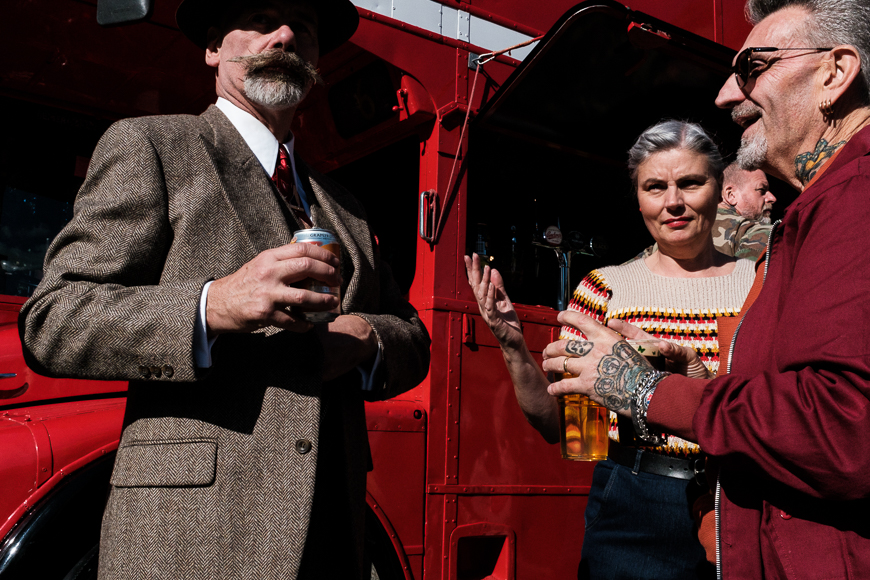
© Polly Rusyn
Well, we’ve reached the end of our storytelling adventure, but remember, this is just the beginning of your own journey in the world of street photography.
Armed with the knowledge and inspiration we’ve explored together, you’re now ready to dive into the streets and start weaving your own visual narratives.
Embrace the art of storytelling, and you’ll not only create images that captivate your viewers but also reveal the extraordinary in the ordinary moments of everyday life.
So, go on and hit the pavement, let your curiosity lead the way, and most importantly, have fun capturing the stories that unfold around you.
Happy shooting, street storytellers!

Check out these 8 essential tools to help you succeed as a professional photographer.
Includes limited-time discounts.













